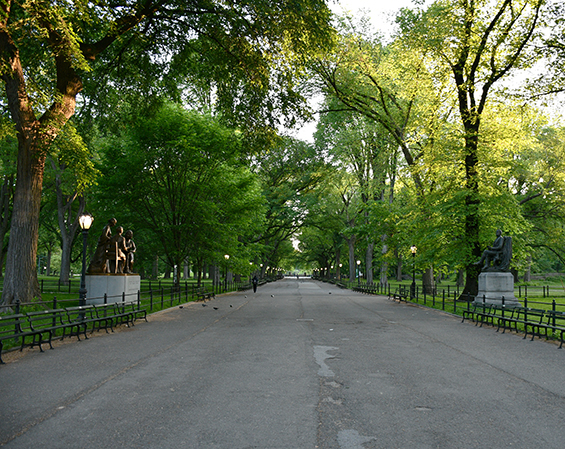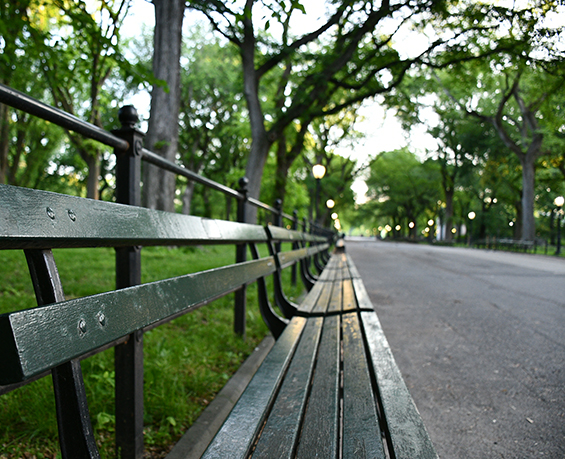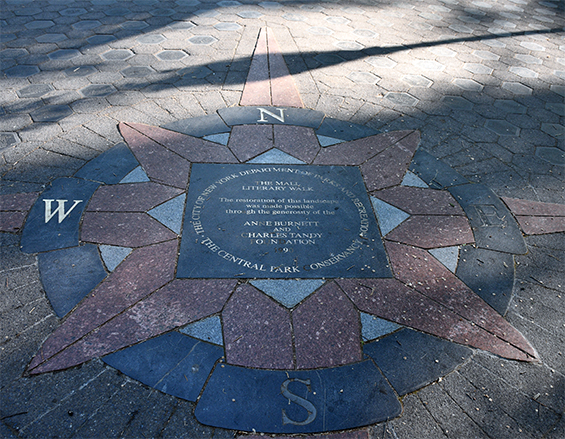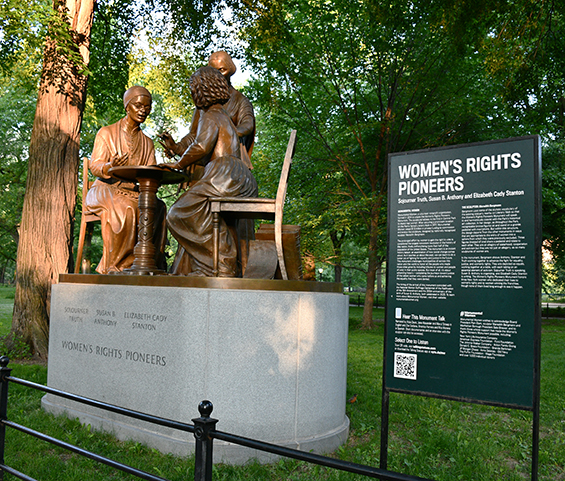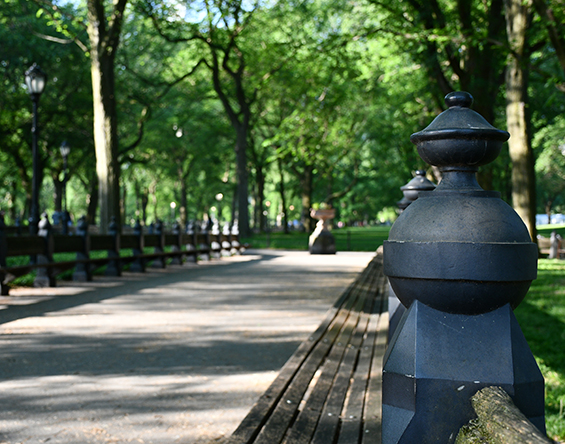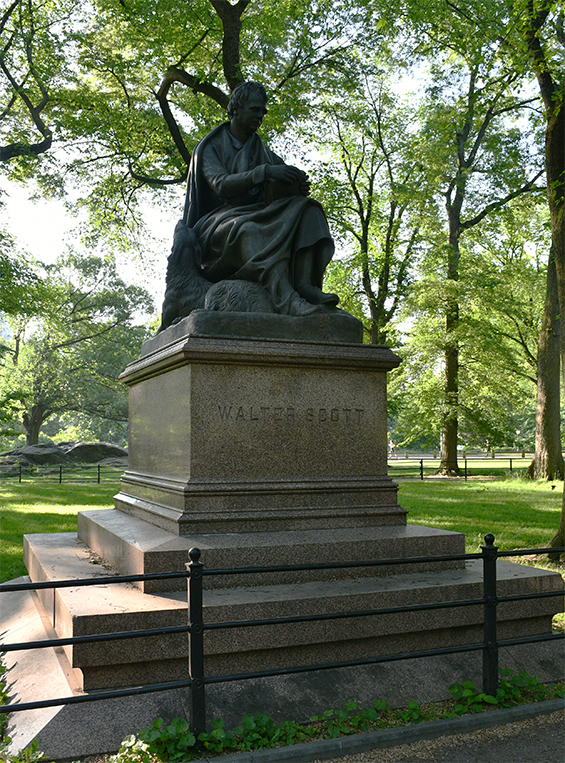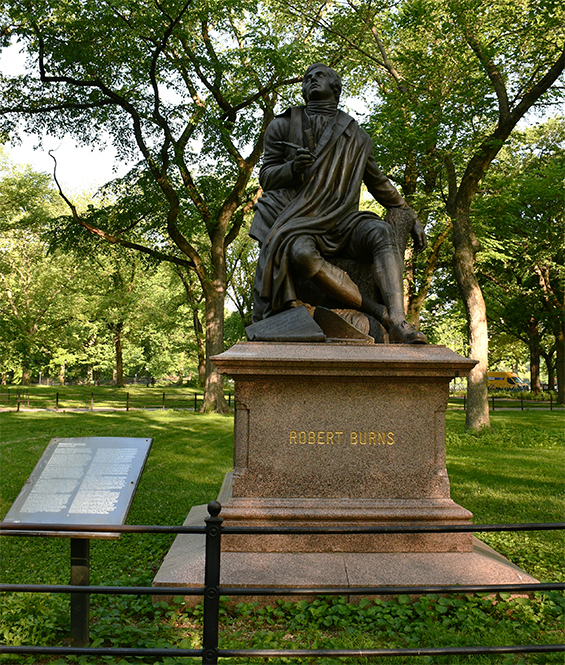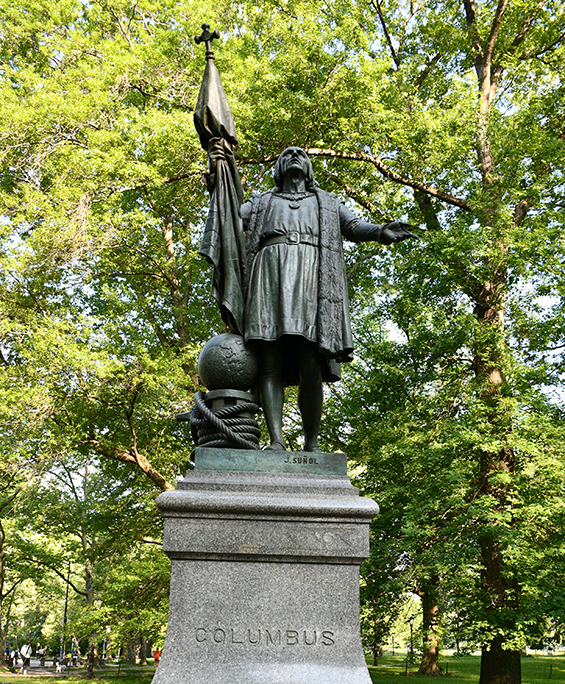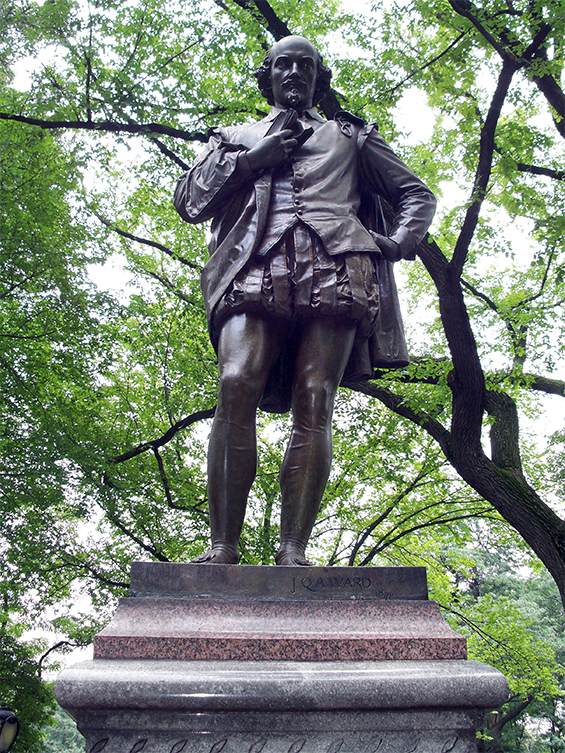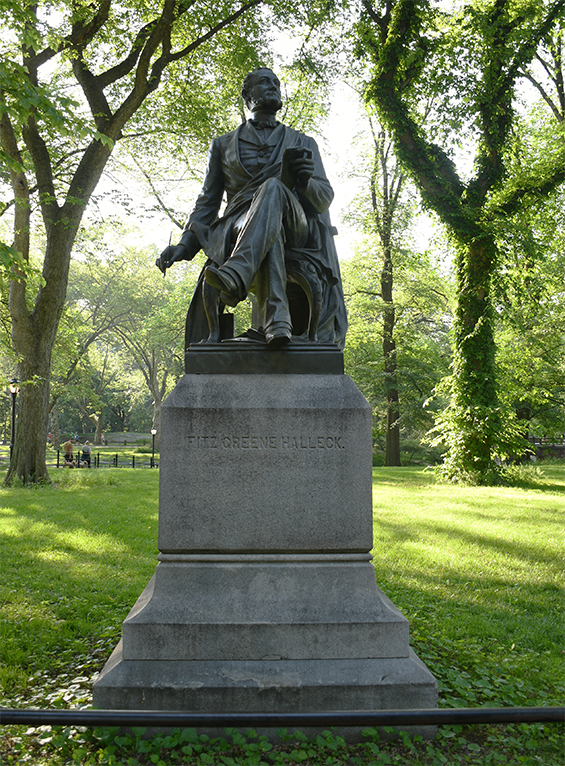The Mall of Central Park
|
The Mall within New York’s Central Park has been featured in numerous movies throughout the years to include “Kramer Vs. Kramer” and the emotional bike-riding scene; in 2014’s “The Other Woman”, when Cameron Diaz, Leslie Mann and Kate Upton plot revenge on their cheating partner; in “Second Act” when Jennifer Lopez bonds with her long-lost daughter; and in “Serendipity” when John Cusack reads through a letter given to him by his best friend.
This wide, straight path lined by two rows of American elm trees was designed by Park designers Frederick Law Olmsted and Calvert Vaux as a formal promenade and gathering space. Like many areas of the Park, visitors can experience this landscape in largely the same way they would have in the 19th century: strolling, sitting, people-watching, listening to music, contemplating monuments, and admiring trees.
Olmsted and Vaux called the Mall ‘an open-air hall of reception’. The designers arranged trees in regular rows and chose American elms because their curvy and overarching branches create an impression of an architectural space, some have compared it to the vaulting of a cathedral. This straight path, one of the few in the Park, connects entrances and landscapes in the south to points north, leading directly to Bethesda Terrace, the other premier gathering space, and the Ramble beyond.
The southern section of the Mall is known as Literary Walk because of the numerous statues of writers added there in the 19th century. In 2020, this stretch of the Mall became the site of the first new monument added to the Park in over 50 years, the Women’s Rights Pioneers Monument. Women’s Rights Pioneers Monument The first in Central Park to depict real women, this monument honors the trailblazing work of pioneering women’s rights advocates Sojourner Truth, Susan B. Anthony, and Elizabeth Cady Stanton. Consisting of bronze figures of Sojourner Truth, Susan B. Anthony, and Elizabeth Cady Stanton, the Women’s Rights Pioneers Monument commemorates the centennial of the ratification of the 19th Amendment, which gave women the right to vote. Sponsored by the group Monumental Women and unveiled in August 2020, the monument is the first in the Park to depict actual women.
Sculptor Meredith Bergmann shows the three women as activists at work: Sojourner Truth speaking, Susan B. Anthony organizing, and Elizabeth Cady Stanton writing. These visionaries (all of whom were New Yorkers) join William Shakespeare, Robert Burns, Sir Walter Scott, and Fitz-Greene Halleck on the southern end of the Mall. While honouring Truth, Anthony, and Stanton’s specific efforts on behalf of women's suffrage, women's civil rights, and the abolition of slavery, the Women’s Rights Pioneers Monument also acknowledges the importance of representing women in New York’s flagship park. The northern stretch of the Mall encompasses the Concert Ground, created in the 19th century as a place to enjoy classical and popular music. It originally featured a cast-iron bandstand designed by architect Jacob Wrey Mould. In 1923, it was replaced by a larger and more modern facility, the Naumberg Bandshell, which still hosts concerts and other performances. Just up the hill to the east is Rumsey Playfield, currently the Park’s main music venue, which hosts the performing arts festival SummerStage.
The Mall and all its different elements provide an important illustration of how the Park was designed as a social space. It was intended as a place for all New Yorkers, regardless of class or background, and the Mall was where they could all come together to enjoy nature, art, and culture. The Statues on The Mall Walter Scott Walter Scott (1771–1832) is one of two Scottish authors memorialized at the southern end of the Mall, in the section known as “Literary Walk” because of the numerous statues of writers.
Scottish Americans gifted the statue to the Park on the 100th anniversary of Scott’s birth. Funds for the monument were collected through newspaper advertisements and from social clubs. Like the monuments to other Europeans cultural figures in the Park, the effort to create a monument to Scott reflected the desires of immigrant groups to establish themselves in the City by advocating for representation in public spaces. The Scottish sculptor John Steell created the bronze figure based on a marble statue he made for Edinburgh, Scotland. The statue as well as the granite pedestal were shipped to New York from his home country. At the unveiling ceremony in 1872, the master of ceremonies noted the proximity of the Scott monument to the Shakespeare monument in the Park landscape and how it reflected public opinion of the authors as equals. Five years later, Scottish Americans succeeded in getting another prominent Scottish writer in the Park, poet Robert Burns, who faces Scott just across the Mall. Robert Burns Robert Burns (1759–1796) is one of two Scottish authors memorialized at the southern end of the Mall, in the section known as “Literary Walk” because of the numerous statues of writers.
After successfully placing Scottish writer Sir Walter Scott in the Park, Scottish Americans started a second campaign for a monument to another cultural icon, Robert Burns, the poet who wrote “Auld Lang Syne” as well as numerous other poems in Scottish dialect. The Burns memorial committee commissioned Scottish sculptor John Steell to create an original figure of Burns equal in size and style to the one he created of Scott. Burns was installed across from Scott on the southern end of the Mall, and the sculpture was unveiled in October 1880. The Burns and Scott monuments were among several monuments that were proposed and donated by groups of European immigrants who sought to see themselves represented in the City’s premier public space, to signal their inclusion in American life. Christopher Columbus The monument to Christopher Columbus (1451–1506) by the Spanish artist Jeronimo Suñol is one of several monuments to historical figures located along the Mall.
Funds for the monument were raised by members of the New York Genealogical and Biographical Society, a group interested in making connections between New York’s past and the present. The president of the Society, General James G. Wilson, was also instrumental in adding the monument to Fitz-Green Halleck on the Mall. When Columbus was installed in 1894, critics of the monument disliked Suñol’s choice of religious and imperialist imagery. Columbus gazes toward the heavens as if receiving direction from God; in his right hand he clutches a Spanish flag whose pole rests on a globe and is topped with a cross. The statue is a smaller replica of one Suñol made for the city of Madrid, Spain. Christopher Columbus was one of many monuments to the explorer created for sites across the country to commemorate the 400th anniversary of his voyage to the Americas, which culminated in the World’s Fair known as the Columbian Exposition in Chicago. But the roots of Columbus’s popularity had much earlier origins. During the 18th century, many American leaders and cultural figures adopted him as a non-British model for establishing a foundational American identity based on individualism and ingenuity. This resulted in the naming of many streets, towns, and schools in his honor. At the turn of the 20th century, he also became a symbol of Italian-American pride. An additional monument to Columbus is located at Columbus Circle. Another was planned for the Park’s southeast corner, also for the 400th anniversary, but never realized. Since the 1970s, the life and legacy of Columbus have been re-examined by scholars and the general public. He is no longer popularly used as a symbol of America, and critics have objected to the veneration of a historic figure and event that led to the exploitation and genocide of indigenous people. As a result, many municipalities have decided to recontextualize or remove their Columbus monuments. William Shakespeare The monument to William Shakespeare (1564–1616) is located at the southern end of the Mall, in the section known as “Literary Walk” because of the numerous statues of writers.
After reading about the construction of Shakespeare memorials in England and Germany, a group of prominent New Yorkers decided to form a Shakespeare monument committee to advocate for one in the City. The group included the actor Edwin Booth and the playwright and theater director Augustin Daly, both instrumental in promoting and popularizing Shakespeare’s works in America. The cornerstone for the monument was laid in the Park in 1864, the 300th anniversary of the Bard’s birth, but the Civil War delayed the effort to complete the monument for several years. The renowned sculptor John Quincy Adams Ward created the likeness of Shakespeare based on three contemporary portraits. The monument was dedicated on May 23, 1872. Ward has several other notable sculptures in the Park, including Indian Hunter, The Pilgrim, and the Seventh Regiment Memorial. Unlike some of the other historical figures monumentalized in the Park, Shakespeare is still widely known, and has an even larger presence in Central Park. Park visitors can see a Shakespeare play at the Delacorte Theater during the summer or stroll through Shakespeare Garden, which features plants mentioned in his work. Fitz-Greene Halleck Fitz-Greene Halleck memorializes the 19th-century poet and essayist most known for his satirical and romantic verse. It is located along the Mall, in the section known as “Literary Walk” because of the numerous statues of writers.
Few visitors to Central Park today recognize the author Fitz-Green Halleck (1790–1867), but he was one of the most popular poets in his time. After he died, friends created a committee to raise funds for a monument. Indicative of Halleck’s fame, the committee included prominent cultural figures such as William Cullen Bryant as well as Andrew Haswell Green, Samuel F.B. Morse, and General William Tecumseh Sherman, all of whom are also memorialized in the Park. They commissioned sculptor James MacDonald to create the bronze figure of Halleck. An estimated crowd of 10,000 attended the dedication ceremony in 1877 where President Rutherford B. Hayes unveiled the monument. The monument to Halleck is significant as the first to an American in Central Park, at a time when American writers were still trying to establish themselves and their distinct point of view. It also came at a time when many of the other monuments in the Park were sponsored by groups of European immigrants eager to see their cultural icons represented in the City’s premier public space. |
Quick Links
Chart Listings
Disclaimer
All images that appear on the site are copyrighted to their respective owners and otsoNY.com claims no credit for them unless otherwise noted. If you own the rights to any of the images and do not wish them to appear on the site please contact us, and they will be promptly removed.
|
2009-2024 onthesetofnewyork.com | Film Locations | Picture Gallery | Privacy Policy | Disclaimer | Contact |
Donations for hosting |
|


